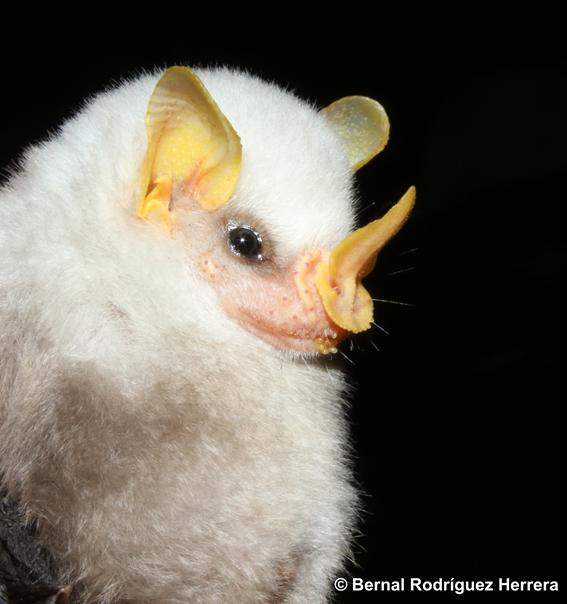Bats are assumed not to use vision for communication, despite recent evidence of their capacity for color vision. The possibility that bats use color traits as signals has thus been overlooked. Some tent-roosting bats have a potential for visual signaling because they exhibit bright yellow skin, a trait that in birds often acts as a sexual signal. The authors searched for evidence of sexual dichromatism in the yellow bare skin of Honduran white bats Ectophylla alba, the first reported mammal with a capacity to deposit significant amounts of carotenoid pigments in the skin. Skin yellow chroma, a measure that reflects carotenoid content, increases in the ears and nose-leaf during development probably due to an increase in dietary carotenoid accumulation. Once in the adulthood, the yellow color of the nose-leaf becomes brighter in males, representing the first evidence of sexual dichromatism in a bat. The nose-leaf brightness tends to covary positively with the body condition of males. It was also found that the skin shows a reflectance peak at 530 nm that virtually coincides with the main reflectance peak (540 nm) of the back side of Heliconia leaves used as roosts. This suggests that these leaves were selected because of camouflage benefits, and the rich lighting conditions of these roosting places then favored the use of skin coloration as a sexual signal. These findings open a new perspective in the physiological and behavioral ecology of bats in which vision has a more relevant role than previously thought. informacion[at]ebd.csic.es: Rodríguez-Herrera et al (2019) Sexual dichromatism and condition-dependence in the skin of a bat. J Mammal https://doi.org/10.1093/jmammal/gyz035


 Las altas temperaturas están provocando que las lagunas y las marismas de Doñana pierdan agua rápidamente
Las altas temperaturas están provocando que las lagunas y las marismas de Doñana pierdan agua rápidamente




